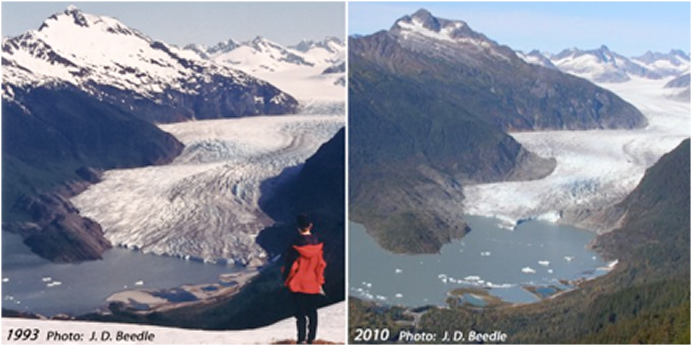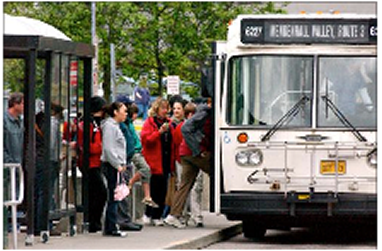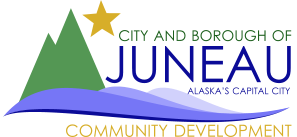Juneau Commission on Sustainability
Menu
Climate
Along with the rest of the world, Southeast Alaska is experiencing climate related changes. Our region has already experienced about 3ºF increase in average winter temperatures over the past 60 years, with a decrease in annual snowfall at sea level from approximately 109 inches to 93 inches. In coming decades Southeast Alaska communities can expect warmer and wetter conditions, warming ocean temperatures and ocean acidification with affects on fisheries, impacts on transportation and infrastructure, and the economic costs of responding to climate impacts likely increasing over time.
For Juneau residents and visitors, the rapid retreat of the Mendenhall Glacier is a powerful reminder. Of particular concern are impacts to Juneau’s hydropower resources, and to salmon and other marine fish and wildlife that are important to our economy and recreation.

Photos courtesy J.D. Beedle: Left – Mendenhall Glacier, 1993. Right – Mendenhall Glacier, 2010
Juneau’s Reponse to Climate Change
 Juneau residents rely heavily on fossil fuels for transportation and heat – about 57% of our internal energy use is tied to highway transportation and buildings. Over the past 5 years the City and Borough of Juneau has worked to assess the impacts and implications of climate change, and joined with other communities across the country in committing to reducing greenhouse gas emissions. In 2011 it adopted the Juneau Climate Action Plan (see link to plan, below) with a goal of reducing emissions by 25% by 2032.
Juneau residents rely heavily on fossil fuels for transportation and heat – about 57% of our internal energy use is tied to highway transportation and buildings. Over the past 5 years the City and Borough of Juneau has worked to assess the impacts and implications of climate change, and joined with other communities across the country in committing to reducing greenhouse gas emissions. In 2011 it adopted the Juneau Climate Action Plan (see link to plan, below) with a goal of reducing emissions by 25% by 2032.
What You Can Do
 As a community, we can make changes that will contribute to reducing emissions of greenhouse gases in our homes, workplaces or our own businesses and do more to prepare for the coming changes to our environment.
As a community, we can make changes that will contribute to reducing emissions of greenhouse gases in our homes, workplaces or our own businesses and do more to prepare for the coming changes to our environment.
By taking action today, together we can reach our community wide goal of 25% percent reduction in carbon emissions by 2032.
Background Links
- CBJ Climate Action Policy
- 2011 Climate Action Plan (Adopted by Resolution 2593 on November 14, 2011)
- Climate Action Manual – Guidance on CBJ implementation of the Climate Action and Implementation Plan. The 2013 City and Borough of Juneau Comprehensive Plan also contains policies relevant to Greenhouse Gases (see Chapter 2 – Sustainability, and Chapter 6 – Energy)
- Comprehensive Plan of the City and Borough of Juneau (Adopted by Ordinance 2013-26 in November 2013)
- Emissions Inventories (Note: currently unable to update using existing methodology – local fuel suppliers would not provide data during a 2015/16 update effort.)
- 2010 Greenhouse Gas Emissions Inventory
- 2007 Greenhouse Gas Emissions Inventory
- Climate Change: Predicted Impacts On Juneau April 2007
- More information about the City & Borough of Juneau’s resolutions and actions on climate change.
The world climate is changing more rapidly than predicted, resulting in accelerating sea level rise, droughts, floods, storms and heat waves. These will impact some of the world’s poorest and most vulnerable people, disrupting food production, and threatening important species, habitats and ecosystems.
Depending on the level of worldwide greenhouse gas emissions, the world faces between 2 and 11ºF of warming over the next century.
Impacts to Juneau
Over the past 60 years, Juneau has already experienced about 3ºF increase in average winter temperatures, with a decrease in annual snowfall at sea level from approximately 109 inches to 93 inches.
The projected impacts of climate change projections for Juneau include:
- Average air temperatures in Juneau will increase by approximately 10°F by the end of the current century.
- By the end of the 21st century, shrubs and trees will have colonized elevations currently characterized as alpine or tundra habitat in southeastern Alaska.
- Many ecological responses to climate change will not be predictable and some may be counterintuitive. For example, yellow cedar trees are freezing in spring as temperature warms due to a loss of insulating snow cover.
- Increasing temperature and precipitation likely will alter the ecology of salmon in southeastern Alaska. Early entry into the marine environment – when food resources are low or absent – will decrease growth and survival.
- Increased intensity and frequency of coastal storms will negatively impact shoreline and wetland nursery areas for many marine species.
- Changes in climate may out pace the capacity of some plants and animals to adapt, resulting in local or global extinctions.
- Rapid changes in the ecology of terrestrial and marine environments will alter commercial, subsistence, and recreational harvesting in ways that cannot be readily predicted.
- While large regions of Alaska are expected to suffer damage to infrastructure associated with rises in sea level, coastal erosion, melting of permafrost, and reductions in sea ice, those impacts will be minimal for the CBJ.
- Reductions in winter snow cover at lower elevations will negatively impact winter recreational activities in the CBJ.
- Limiting the impacts of greenhouse gas emissions will require reductions in the consumption of fossil fuels. Those reductions will negatively impact transportation to and within the CBJ.
- Economic costs of community responses to climate change are likely to increase over time, and proactive responses will minimize negative impacts.
- Salmon and other marine resources that are important to Southeast Alaska may be affected by ocean acidification, and by increasing temperatures and precipitation, probably decreasing growth and survival.
(primary source: Climate Change: Predicted Impacts On Juneau April 2007)
- April 2007: A panel of scientists was convened to advise the CBJ on the present and projected impacts of climate change on Juneau. The report: Climate Change: Predicted Impacts on Juneau
- March 19, 2007: As a result, the CBJ Assembly joins ICLEI Cities for Climate Protection (Resolution 2397(b)) and pledges to conduct a greenhouse gas emissions inventory, establish a greenhouse gas emissions reduction target, and develop and implement an action plan.
- CBJ Resolution 2397 – CBJ joins ICLEI (March 2007)
- CBJ then began the steps recommended by ICLEI, including taking a baseline inventory of greenhouse gas emissions for the city and borough.
- March 2009: CBJ Greenhouse Gas Emissions Inventory for 2007-March 2009
- November 2, 2009: CBJ Assembly adopts greenhouse gas reduction goals, including a community reduction goal of 20% and a municipal government reduction goal of 1% by 2012.
- Resolution 2502: A Resolution Adopting Greenhouse Gas Reduction Goals
- November 2011: This was followed by a contract to develop a Climate Action Plan to guide the community in addressing and reducing climate impacts.
- Juneau Climate Action & Implementation Plan, Nov 2011
- November 14, 2011: The CBJ Assembly adopts the Climate Action Plan, including the goal of reducing CBJ greenhouse gas emissions by 25% by the year 2032.
- CBJ Resolution 2593: A Resolution Adopting the Juneau Climate Action Plan
- November 2011:CBJ Greenhouse Gas Emissions Inventory for 2010
- December 2011: CBJ Climate Action Manual
The Juneau Commission on Sustainability has made implementation of the plan a priority. This website is one of the products recommended in the plan.
Many of the top actions recommended in the plan are things that will reduce or shift energy use, save money over the long run, and make CBJ household, businesses, and local government more resilient in the face of uncertainty about future fossil fuel costs, economic conditions, and government policies in response to climate change.
The Climate Action Plan’s goal is to reduce community-wide greenhouse gas emissions 25% by 2032.
The Climate Action Plan identifies the top actions that the CBJ and community can take to reduce energy use and greenhouse gas emissions for Juneau. The list is not prioritized or inclusive of all possible actions, but rather includes actions that can be completed in the next five years and will have the greatest impact on reducing energy use and emissions in Juneau.
TOP ACTIONS
Support existing state and federal weatherization programs for homes and public buildings.
As of the end of 2010, 455 Juneau home owners had completed the Alaska Housing and Finance Corporation Home Energy Rebate Program and 607 home owners were working on energy retrofits. On average, homes completed see a reduction in energy use of 12,000 pounds CO2 per year. The State allocated $37.5 million to fund the rebate program for the 2011-2012 fiscal year.
Provide new local programs for weatherization, energy efficient upgrades, and new renewable energy systems for commercial, rental housing, or multi-family buildings.
Examples are:
- Energy efficiency rebate for commercial, rental, non-profit, and industrial buildings.
- Property tax exemptions.
Update the local building code.
Increase energy efficiency requirements for all new commercial and residential buildings. Currently the CBJ is enforcing the requirements of the 2006 International Residential Code. Adopting the 2012 International Energy Conservation Code (IECC) would lead to an estimated 30% reduction in energy use in new buildings and could be applied to both residential and commercial structures (Marquam George, Personal Communication October 20, 2011).
Encourage federal, state, and local government agencies to conserve energy and increase energy efficiency in buildings and operations, share information and expertise on weatherization, energy efficient technology, and take a leadership role in reducing local energy use.
Currently, each level of government has been working to decrease energy used for buildings and operations. Additional actions for CBJ include:
- Holding regular meetings that bring together private business, university, federal, state and local agency personnel working on energy efficiency and renewable energy systems to share information and expertise and to find areas for collaboration.
- Requiring the completion of life cycle energy audits and cost analyses prior to retrofitting CBJ buildings.
- Implementing recommended retrofits and improvements to CBJ buildings identified through energy audits.
Partner with the University and non-profits.
Develop local professional expertise in weatherization, energy efficient systems, and new energy saving technology by providing opportunities for CBJ personnel and contractors to receive installation and maintenance training. This expertise is needed to support the operation of new energy efficient systems and could be a growth sector for the community. Multi-agency collaboration on training could lead to additional funding opportunities.
Support energy efficiency and renewable energy pilot projects in Juneau.
These projects will gather good Juneau-specific data on new and changing technologies such as solar, wind, and geothermal, in order to be better prepared for the economics of tomorrow. These projects could have an educational component and be associated with local schools where data is gathered on the effectiveness of various technologies in Juneau.
Inform residents of existing incentives for and energy cost savings related to energy efficient vehicles; provide local incentives for the purchase of fuel efficient vehicles.
The current average overall fuel efficiency for vehicles on the road is 20 mpg. Incentives could be put in place for vehicles that meet target fuel efficiency (such as greater than 40 mpg).
Evaluate the assembly-adopted 2008 Transit Development Plan.
Determine which actions will garner the greatest reductions in GHG emissions and energy use. The plan recommends that CBJ consider limiting future fleet purchases to alternative fuel vehicles such as hybrid-electric vehicles. Consider, for example, adding a hybrid-electric bus for the downtown circular loop.
Improve the Cross-Juneau Bikeway as described in the assembly-adopted 2009 Juneau Non-Motorized Transportation Plan.
Bring each route segment up to standard; add consistent signage and produce a route map for visitors and residents; make the route a priority for year round maintenance, sweeping, and snow removal; and in the long term develop a separated path from Sunny Point to Vanderbilt Hill to bypass Lemon Creek.
Coordinate with the Juneau Commission on Sustainability and the CBJ Green Team.
Implement a public outreach and education campaign. Educate local businesses and homeowners on the potential benefits and energy savings from energy conservation and upgrading to more energy efficient systems. Develop a website that provides information on energy conservation and energy efficiency and connects residents and business owners to local services and expertise. Institute an annual award program that recognizes local businesses and individuals who help further the goals of the Climate Action Plan.
Allocate CBJ staff and resources to implement the Climate Action Plan.
Given current budget constraints, tasks could be assigned to several existing CBJ staff, the Juneau Commission on Sustainability, and the CBJ Green Team. When economic conditions change and the CBJ budget allows, an Energy Manager could be hired to provide leadership on energy conservation and GHG reductions. The savings that would result from increased energy efficiency in CBJ buildings and operations could defray or fully cover the cost of the position.
Develop an Energy Plan for Juneau.
This plan would identify and evaluate the technical and economic feasibility of renewable energy sources (including hydroelectric, biomass, solar, tidal, and wind) that will be available to meet the community’s future need. The Energy Plan will need to be flexible enough to respond to changing conditions and will need to examine the full range of renewable energy options and the relative costs. Completion of an Energy Plan would require input from other levels of government and the private sector.
